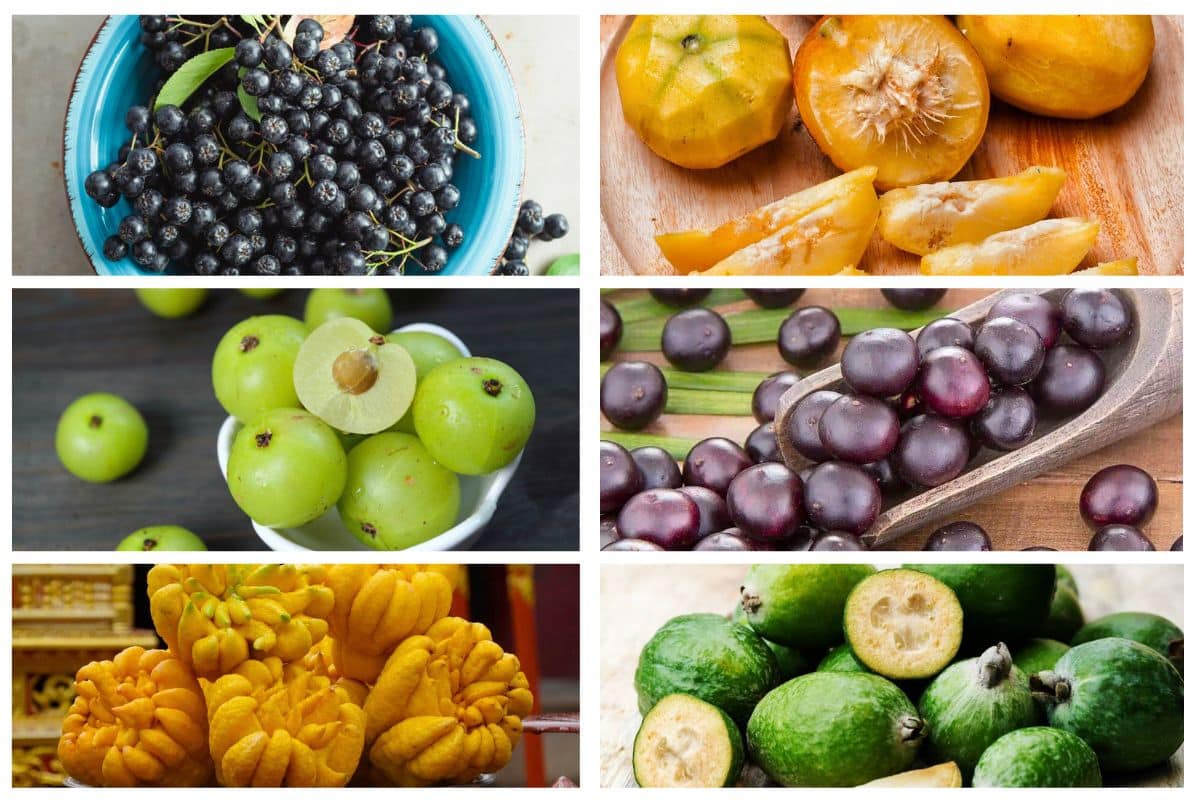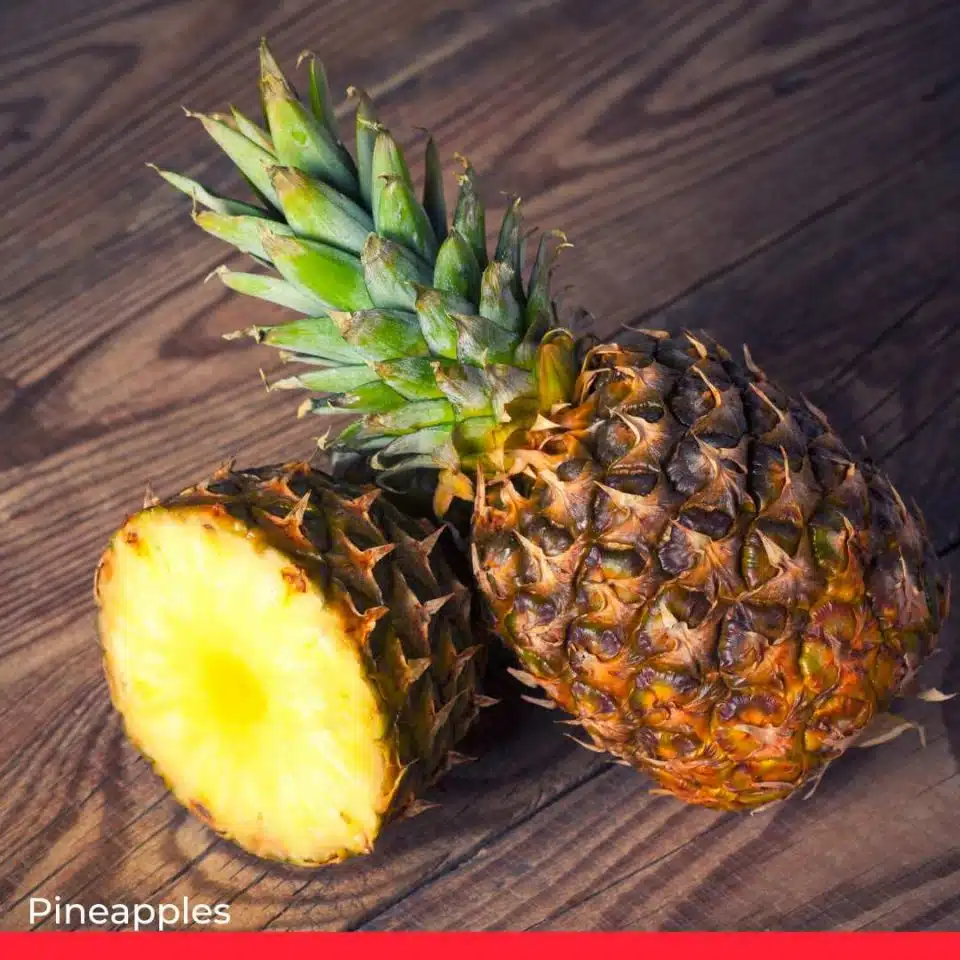Fruits That Start With the Letter A

There’s something oddly satisfying about browsing foods alphabetically. And today, we’re diving into one of our favorite categories: fruits. Since this is the first post in the series, we’re kicking things off with fruits that start with the letter A.
We genuinely enjoy both common and lesser-known fruits, so this list was a joy to put together — and maybe it’ll inspire you to try something new at your local market or even order it online. We’ve also included a few recipe recommendations you can try using some of the delicious fruits listed here.
Let’s get started — here’s a list of no fewer than 67 fruits that start with the letter A. Who would’ve guessed there were that many?!
1. Apple

The classic fruit we all know and love. Apples come in countless varieties, from sweet to tart, and are perfect raw, baked, juiced, or turned into sauce. Speaking of baked apples, check out this French tarte Tatin recipe or our classic apple strudel with vanilla cream.
2. Apricot
A soft, golden-orange fruit with a delicate, sweet-tart flavor that are very popular in Europe. They’re amazing fresh but also delicious when dried, used in preserves, or when used in various cakes and pies. This thyme apricot upside-down cake is one of our favorite, but this French apricot galette is also to die for.

3. Avocado
Technically a fruit, avocados are creamy, rich, and full of healthy fats. They’re great in both savory and sweet dishes, and who doesn’t love guacamole?
4. Acerola (Barbados Cherry)
A bright red cherry-like fruit known for its super high vitamin C content. It’s tart, juicy, and often used in juices, supplements and even local rums.
5. Asian Pear
Crisp like an apple but sweet and juicy like a pear. It’s refreshing and often eaten raw or sliced into salads.
6. Ambarella

A tropical fruit with a fibrous texture and tangy flavor. Often enjoyed pickled or in savory dishes across Southeast Asia (the plant’s leaves are also used in cooking in Cambodia). It’s a must try-fruit when visiting Bali. When eaten fresh, it is a refreshing snack, with the fruit’s firm, green skin giving way to juicy, tart-sweet flesh. The balance between sour and sweet makes it a delightful treat, especially on a warm Balinese day.
7. Araza (Amazonian Pear)
Native to the Amazon, this fruit has a strong citrusy flavor and is used in juices and desserts. It’s not often eaten raw due to its sour taste.
8. Alligator Apple (Pond Apple)
Grows in swampy areas, has tough skin, and gets its name because alligators love to eat the fruit. It’s more of a survival food than a delicacy, with a bland to bitter taste.
9. African Cherry Orange
Small, orange fruits with a citrusy burst. They’re common in parts of West Africa and are rich in antioxidants.
10. Alpine Strawberry
These wild strawberries are tiny but bursting with flavor (way more intense than regular strawberries) and can be found in many parts of Europe. They’re perfect for snacking, making jam, or adding to desserts.
11. Arbutus (Strawberry Tree Fruit)
A round, red fruit with a gritty texture and mildly sweet taste native to Western Europe and the Mediterranean region. It’s often used for making jams or liqueurs.
12. Amla (Indian Gooseberry)

Extremely tart and packed with vitamin C. Commonly used in Indian cooking and Ayurvedic medicine. Amlas are commonly made into delicious chili pickles and to make a delicious chutney.
13. Australian Desert Lime
A hardy citrus native to the Australian outback. It has a strong tang and is often used in jams or sauces.
14. American Plum
Small and tart, these plums grow wild in many parts of the U.S. They’re used for jellies, preserves, or just eaten fresh.
15. African Breadfruit

More of a starchy food than a sweet fruit, it’s usually boiled or roasted and used in savory dishes. It is commonly found in West and Central Africa and considered a delicacy by Ibo ethnic group in Nigeria.
16. African Medlar
A soft, brownish fruit with a sweet flavor that is native to southern Africa. Often eaten fresh or used in traditional remedies, it have a pleasant apple-like flavor.
17. Abiu
Native to South America, this yellow fruit has a creamy, jelly-like flesh. Its flavor is mild and sweet, often compared to caramel.
18. Aizen Fruit
Found in parts of Africa, this fruit is small and has a tangy flavor. It’s not widely cultivated but is enjoyed locally.
19. Australian Round Lime
A close relative of the finger lime. It has a sharp citrus flavor and is great for cooking or cocktails.
20. Ananas (Pineapple)

The tropical fruit we all love, just under its other name. Juicy, sweet, and perfect in desserts or savory dishes (check out this delicious grilled shrimp with pineapple recipe).
21. African Cucumber (Horned Melon)
A spiky orange fruit with green jelly-like flesh. It’s mildly sweet and great for decorative fruit salads.
22. Atemoya
A hybrid of sugar apple and cherimoya. It has a creamy texture and a sweet, tropical flavor.
23. Apple Berry

Native to Australia, this small fruit is mildly sweet and often eaten straight from the vine. It resembles a small blueberry.
24. Araca Boi
A bright yellow Brazilian fruit with a sour punch. Typically used in juices and jams.
25. Anchovy Pear
Mostly found in the Caribbean, this fruit is used in pickles. It’s not often eaten raw.
26. Aprium
A cross between apricot and plum. It combines the best of both fruits: juicy and sweet with a slight tang.
27. Arrayan (Chilean Myrtle Fruit)
Small, purple berries with a spicy, sweet flavor. Often used in local wines or jams.
28. Asam Gelugur
Sour and used in Southeast Asian cuisine. It adds tang to curries and soups.
29. Amaranth

Known more for its seeds, but technically a fruit. It’s high in protein and often used like a grain.
30. American Persimmon
Smaller and sweeter than its Asian counterpart. Delicious when fully ripe, but astringent if eaten too early.
31. Apple Mango
A mango variety with apple-like sweetness. Super juicy and fragrant.
32. Agbalumo
Also called African star apple. Sticky, chewy, and both sweet and tart.
33. Aronia (Chokeberry)

Extremely astringent when raw, but great in juices, jams, and syrups. A powerhouse of antioxidants.
34. Abacaxi
A Brazilian variety of pineapple known for its sweetness. It is less acidic than typical pineapples.
35. Amra
Indian hog plum, sour and crunchy. Often pickled or used in delicious chutneys.
36. Arhat (Buddha’s Hand Fruit)

A citrus with long, finger-like segments. More for aroma and zest than eating.
37. Apteryx
A kiwi variety from where else but New Zealand. Smaller and sweeter than the standard kiwi.
38. African Pear
A soft fruit with an oily texture. Commonly roasted and eaten as a snack.
39. Andean Blackberry
Larger and juicier than typical blackberries. Used in juices and jams in South America.
40. Allspice

Technically a dried berry from the pimento tree. Used as a spice, but yep, it’s a fruit. Here’s more about allspice.
41. Armenian Cucumber
Looks like a cucumber, but tastes like a mild melon. Often eaten raw or pickled.
42. Australian Bush Tomato
Tiny and packed with flavor. Used by Indigenous Australians in traditional dishes.
43. Arabica Coffee Cherry
The sweet, red fruit that holds the coffee bean. Rarely eaten but totally edible.
44. Ackee

National fruit of Jamaica, it is commonly eaten with saltfish in Jamaica, but also a popular ingredient for various desserts such as ice cream. Only safe to eat when fully ripe!
45. Arava Melon
A sweet melon from Israel. Juicy and fragrant, perfect for summer.
46. African Mango
African mango is known for its seeds, often used in weight-loss supplements. The flesh is fibrous and nutty.
47. Ambong
A mango-like fruit from Southeast Asia. Soft, sweet, and slightly tangy.
48. Açaí Berry

Famous superfood from the Amazon region and a super popular fruit in Brazil. Tart, earthy, and usually served frozen, together with bananas and other fruits.
49. Almond Fruit
We all love almonds and the nut is actually the seed of the almond fruit. The outer hull is bitter and inedible. And since we’re here, we can only recommend this pear almond cake recipe or these Turkish almond cookies.
50. Achiote
Used as a condiment for their bright color and flavor, the seed pods are technically fruits. Adds a deep red hue to dishes.
51. Amazon Tree Grape
A grape-like fruit from the Amazon. Often used in juices.
52. Araçá
This is a Brazilian fruit with a tangy, tropical taste. Often juiced or made into jams.
53. Argan Fruit

Produces argan oil. The pulp is edible but the oil is the real star.
54. Annonilla
Related to cherimoya, small and flavorful. A hidden gem in Central America.
55. African Peach
Not a true peach, but soft and sweet. Often eaten raw.
56. Aguaje
Scaly red skin with a rich, nutritious pulp. Aguaje are commonly sold in Amazonian markets.
57. Amanatsu
A citrus from Japan, similar to grapefruit but sweeter. Its is great in desserts and juices.
58. Alpinia Fruit
From the ginger family. Aromatic and sometimes used in sweets.
59. Aiphanes Palm Fruit
Covered in spines but has edible orange pulp. Popular with wildlife.
60. Agnok Fruit
A citrusy Southeast Asian fruit. Rare, but super flavorful.
61. Achocha

South American vine fruit. Looks like a spiky cucumber and is great in stir-fries.
62. Abyssinian Gooseberry
A tart berry from Africa. Often eaten raw or used in preserves.
63. Alupag
Similar to lychee, but with a thicker skin. Juicy and fragrant.
64. Atherton Raspberry
Bright red and sweet. Native to Australia and perfect for desserts.
65. Ananas Guava

This is a guava variety with a pineapple-like flavor. Very fragrant.
66. Aristotelia Fruit
Found in South America. Dark and often used in wine.
67. African Mangosteen
Not related to regular mangosteen, but sweet and citrusy.
Okay, maybe we geeked out a little too much, but honestly, who wouldn’t with a list this good? 🙂 If we missed any fruits that start with the letter A please let us know in the comments section below.
Related: 100 Foods That Start with the Letter A
Related: 106 Best Foods Starting with B
Related: 100+ Foods Starting with C
Related: 100+ Foods Starting with D

